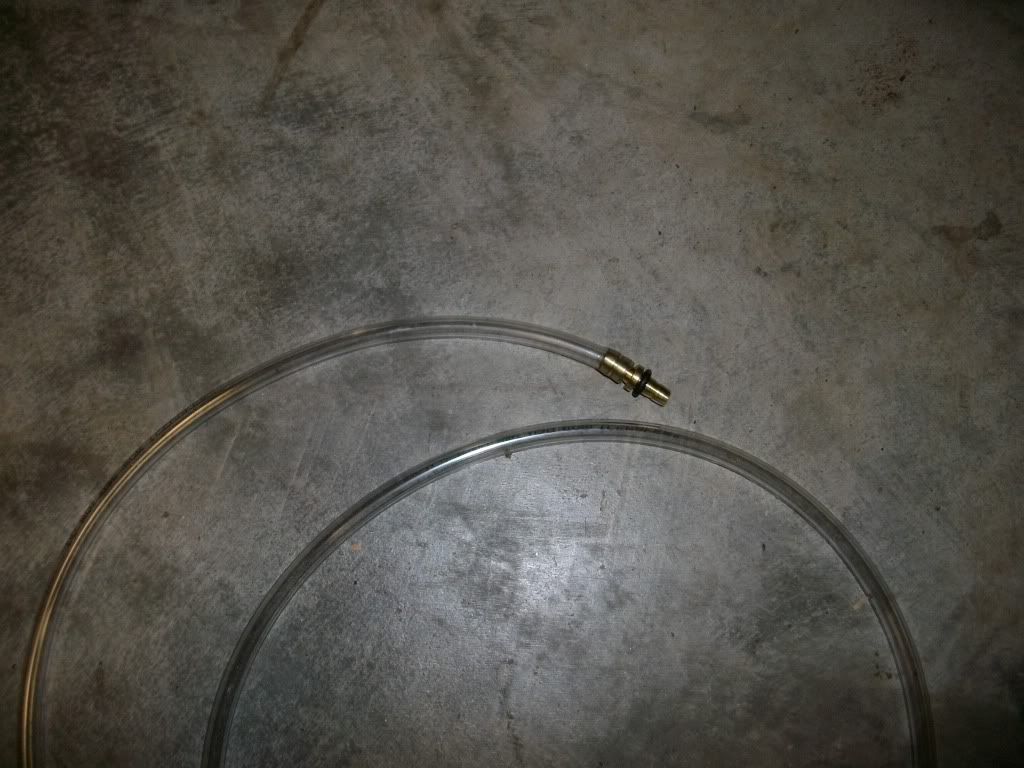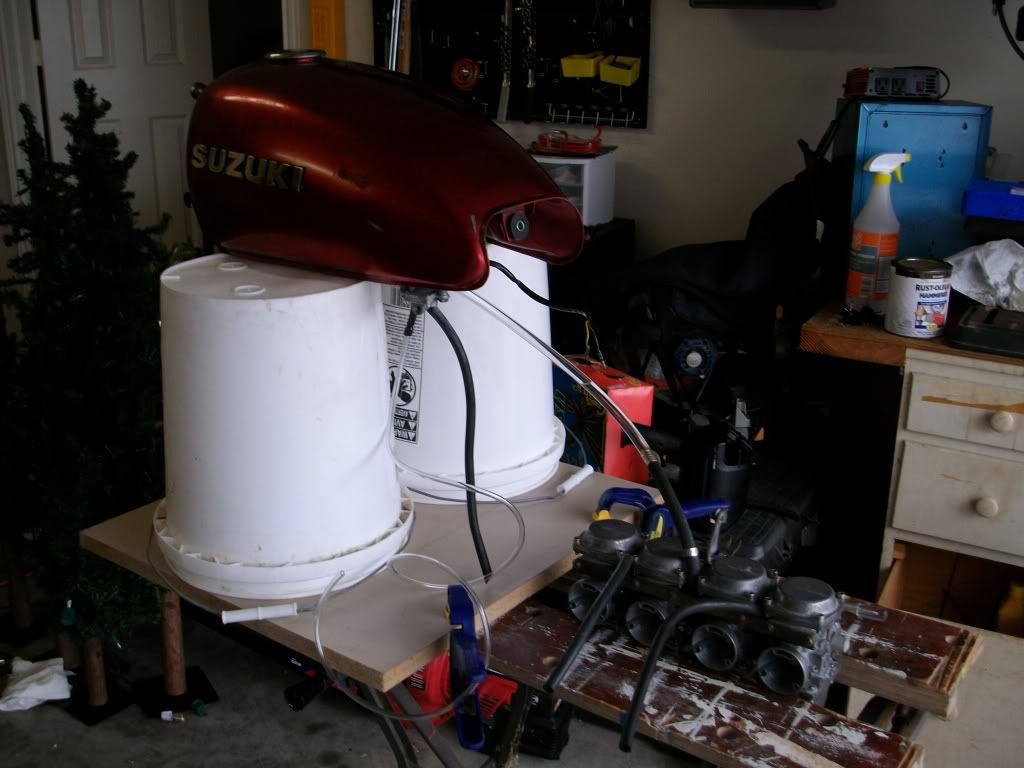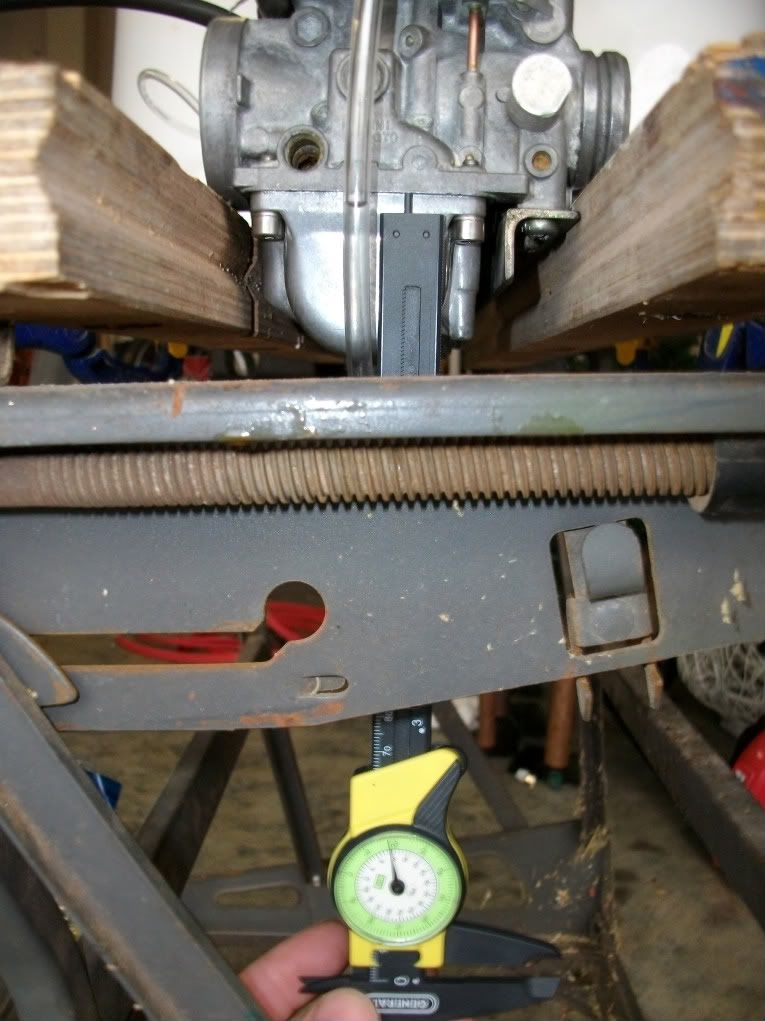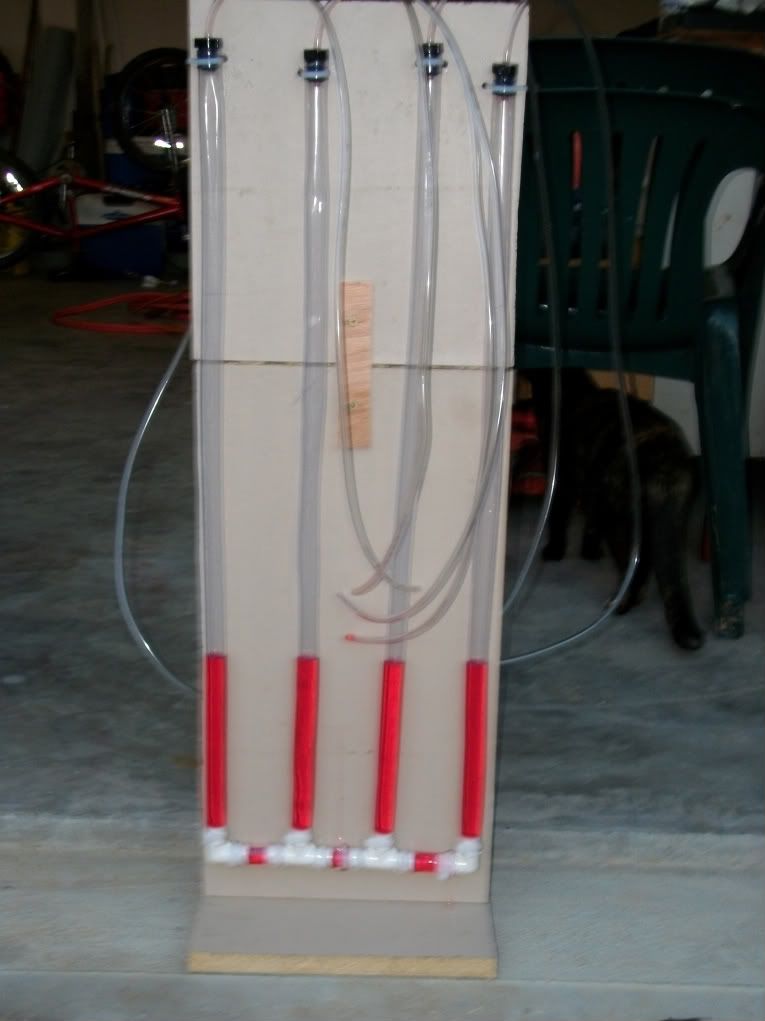The bike will start up pretty easy and idle, but sputters badly over 2.5-3k rpms, particularly under load. Also the #2 and #4 spark plugs show running rich and the #1 and #3 plugs appear to be lean. So I think I must have some carb sync/fuel delivery issue.
I built a gauge to check the fuel level in the float bowls using a 3/16" barb that I threaded and some clear tubing.

I set up on a work bench using clear tubing for the fuel line so I could see the fuel and checked the level of the gas in the float bowls.


I found the #1 carb fuel level was low so I adjusted the float and all 4 carbs were within the 4.5 to 5.5 mm limit in the service manual.
I installed the carbs and tried to set the idle mixture screws for max rpms. Not really being able to tell a difference I reset them all and decided to go ahead and try to sync the carbs with the gauge I built. I did some research and found a few threads on forums where people had reported good results using a gauge like this:

The gauge is made of 2'-3" long pieces of 5/8" ID tubing filled partially with Marvel Mystery Oil (was going to use ATF, but had the MMO and it appears to have about the same specific gravity and I figured it was safe if it got sucked into the engine). 3/16" tubing connects these tubes to the intake boots and I used pilot jets as flow restrictors.
On starting #4 immediately started sucking all the fluid up, so I shut it down. I decided to omit #4 for the time being and plugged it off. Started the bike and then #2 started doing the same thing. Since they are sucking in the fluid so fast I can't get a chance to attempt any adjusting. These are also the two cylinders that show running rich, I'm assuming that has to do with them having significantly more vacuum than the other two cylinders.
Any advice on how to proceed from here?
.png)





Comment